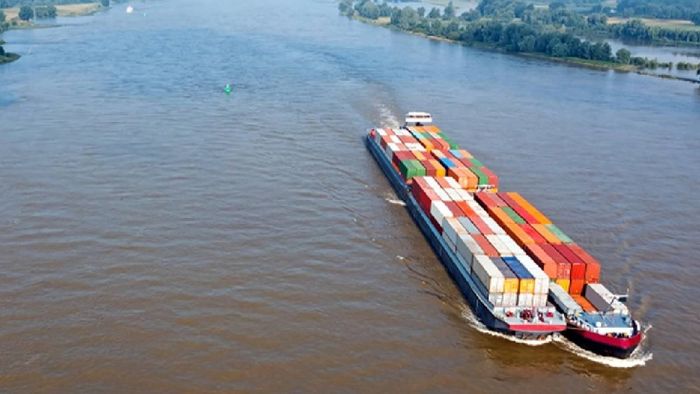India’s inland waterways register historic surge in cargo movement for 2024–25
The Inland Waterways Authority of India (IWAI), under the Ministry of Ports, Shipping and Waterways, has reported a record-breaking performance in cargo transportation for the fiscal year 2024–25, marking a significant milestone in the Inland Water Transport (IWT) sector.

- Apr 16, 2025,
- Updated Apr 16, 2025, 11:10 AM IST
The Inland Waterways Authority of India (IWAI), under the Ministry of Ports, Shipping and Waterways, has reported a record-breaking performance in cargo transportation for the fiscal year 2024–25, marking a significant milestone in the Inland Water Transport (IWT) sector.
A total of 145.5 million tonnes (MT) of cargo was moved through the National Waterways (NWs), reflecting the highest ever throughput achieved in the country’s inland waterways history. This represents a 9.34% increase over the cargo traffic recorded in FY 2023–24 and a massive jump from the 18.10 MT transported in FY 2013–14, registering an impressive Compound Annual Growth Rate (CAGR) of 20.86% over the past decade.
The surge is backed by a combination of infrastructure expansion and policy reforms. The number of operational waterways has increased from 24 to 29 active channels in FY25, significantly enhancing the country’s cargo-handling capabilities.
According to official data, coal, iron ore, iron ore fines, sand, and fly ash emerged as the top five commodities transported, jointly contributing to over 68% of the total cargo volume.
One of the key drivers behind the sector's growth is the introduction of the Jalvahak Cargo Promotion Scheme in December 2023. Designed to incentivize cargo movement through inland waterways, the scheme offers up to 35% reimbursement on actual operating costs incurred by cargo owners and operators. The policy has also helped roll out scheduled cargo services on National Waterways 1, 2, and 16, including through the Indo-Bangladesh Protocol routes. This is expected to shift nearly 800 million tonne-kilometres of cargo traffic to the waterway mode, equivalent to 17% of the current modal share.
Further propelling the momentum is the implementation of the National Waterways (Construction of Jetties/Terminals) Regulations, 2025, aimed at encouraging private sector participation. The regulations offer a digitally streamlined approval process for obtaining No Objection Certificates (NOCs), fostering greater public-private and joint venture investments in terminal infrastructure.
To improve navigability and operational efficiency, end-to-end dredging contracts have been initiated across critical waterway segments. In addition, the deployment of Roll-on/Roll-off (Ro-Ro) and Ro-Pax ferry services has played a crucial role in facilitating smooth cargo movement.
The government’s comprehensive and coordinated efforts continue to underscore its commitment to transforming inland water transport into a competitive and sustainable logistics mode in India’s multimodal transport ecosystem.